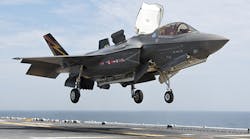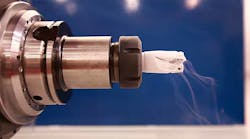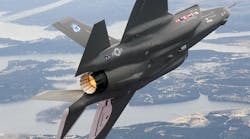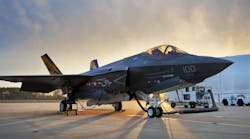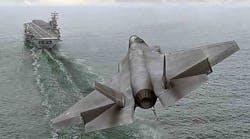The U.S. Department of Defense is allotting new funds to Lockheed Martin and Pratt & Whitney for continuing production in the F-35 Lightning II Joint Strike Fighter program. Lockheed, the primary contractor for the fighter jet, is drawing $559.5 million to fund assembly of the aircraft, and Pratt & Whitney will receive $1.5 billion to produce 99 new F-135 engines.
Also, Lockheed confirmed reports it is finalizing negotiations with the Pentagon to start production on the Lot 9 of the F-35, a contract that has been expected for several months. More than a year ago, Defense approved $920 million for Lockheed to proceed with “advanced procurement” (i.e., the materials, parts, and systems sourced from the vast network of manufacturers supplying the F-35 program) for Lot 10 production, an indicator of the scope of the supply and manufacturing program.
The F-35 is a stealth-enabled, single-engine aircraft in development for more than a decade, and now in testing and training use by the U.S. Marine Corps, and soon it will be taken on by the U.S Air Force. The U.S. Navy, and the U.K. Royal Air Force, as well as defense ministries in several NATO and other Allied nations also will deploy the fighters in the future.
However, the F-35 program has been under close scrutiny and criticism for several years because of its costs, reportedly the most expensive defense program in history. The Pentagon has begun negotiating production authorizations in two-year allotments as part of the effort to optimize costs and logistics of sourcing materials and parts. Also, Lockheed and two other major contractors, BAE Systems and Northrop Grumman, have been implementing cost-cutting strategies in the past two years.
According to Lockheed’s F-35 program manager, and reported first by The Wall Street Journal, negotiations now coming to a close would authorize production for 160 fighter jets over two years.
